Software Can Make Non-Abstract Improvements to Computer Technology Just as Hardware Can (But Didn’t Here)
In Customedia Technologies, LLC v. Dish Network Corporation, [2018-2239, 2019-1000] (March 6, 2020), the Federal Circuit affirmed the PTAB’s determination that U.S. Patent Nos. 8,719,090 and 9,053,494 on comprehensive data management and processing systems were ineligible under 35 U.S.C. §101.
The Federal Circuit followed the Supreme Court’s two-step framework for determining patent-eligibility under §101. At Step 1, the Federal Circuit found that the claims at issue here were directed to the abstract idea of using a computer to deliver targeted advertising to a user, not to an improvement in the functioning of a computer. The Federal Circuit explained that to be a patent-eligible improvement to computer functionality, it requires the claims to be directed to an improvement in the functionality of the computer or network platform itself. Improving a user’s experience while using a computer application is not, without more, sufficient to render the claims directed to an improvement in computer functionality. In sum, software can make non-abstract improvements to computer technology just as hardware improvements can. But to be directed to a patent-eligible improvement to computer functionality, the claims must be directed to an improvement to the functionality of the computer or network platform itself.
At step two, the Federal Circuit agreed with the Board that the elements of the claims, considered individually and as an ordered combination, fail to recite an inventive concept. The Federal Circuit noted that aside from the abstract idea of delivering targeted advertising, the claims recite only generic computer components, including a programmable receiver unit, a storage device, a remote server and a processor. Such generic and functional hardware is insufficient to render eligible claims directed to an abstract idea. The invocation of already-available computers that are not themselves plausibly asserted to be an advance amounts to a recitation of what is well-understood, routine, and conventional.
Failure to Meet Duty of Disclosure; Federal Circuit Finds Lawyers Chose Advocacy over Candor
In GS Cleantech Corp. v. Adkins Energy LLC [2016-2231, 2017-1838] (March 2, 2020), the Federal Circuit affirmed the district court’s determination that U.S. Patent Nos. 7,601,858, 8,008,516, 8,008,517, and 8,283,484, directed to the recovery of oil from a dry mill ethanol plant’s byproduct, was unenforceable due to inequitable conduct. The inequitable conduct claim related to whether the patentee failed to disclose information that would have implicated the on-sale bar under 35 U.S.C. § 102(b).
To prevail on a claim of inequitable conduct in a patent case, the accused infringer must prove by clear and convincing evidence that the patentee: (1) knew of the reference or prior commercial sale; (2) knew that it was material; and (3) made a deliberate decision to withhold it. After a bench trial, the District Court concluded that CleanTech and its attorneys engaged in inequitable conduct in obtaining the Patents-in-Suit, rendering the patents unenforceable.
The Federal Circuit found that the district court did not abuse its discretion in determining that the claimed invention was the subject of an offer for sale, and was ready for patenting in the summer of 2003, before the critical date. The federal circuit further found that the district court did not abuse its discretion in concluding that CleanTech and its lawyers made a deliberate decision to withhold material information with the specific intent to deceive the USPTO.
The Federal Circuit said that in addition to knowledge and materiality, inequitable conduct requires a clear and convincing showing that CleanTech “made a deliberate decision to withhold” the material information. Further, the specific intent to deceive must be the single most reasonable inference drawn from the evidence. The Federal Circuit found substantial evidence supported the district court’s finding that CleanTech took affirmative steps to hide the offer for sale from their lawyers, then, later the USPTO when they learned that it would prevent them from profiting from the patents. The Federal Circuit also found support for the district court’s determination that Cleantech and its attorneys withheld evidence of successful testing before the critical date and made false representations by implying that the invention was not reduced to practice until after the critical date. In particular the Federal Circuit noted the submission of information to antedate a reference without disclosure of the earlier information The Federal Circuit also noted that it appeared that CleanTech and its lawyers “threatened” a third party to support its view of the facts “spoke” to CleanTech and its attorneys intent to deceive the USPTO. It was also important to the district court and the Federal Circuit that a detailed Information Disclosure Statement had been prepared and not filed, the district court concluding, and the Federal Circuit apparently agreeing, the lawyers “chose advocacy over candor.” Finally, the Federal Circuit agreed with the district court that failure to correct the false declaration originally filed was the “strong evidence of intentional deceit.”
It has been argued that the Federal Circuit has put attorneys in a difficult position in dealing with their clients. However, this is more a function of 37 CFR 1.56 which provides:
A patent by its very nature is affected with a public interest. The public interest is best served, and the most effective patent examination occurs when, at the time an application is being examined, the Office is aware of and evaluates the teachings of all information material to patentability. Each individual associated with the filing and prosecution of a patent application has a duty of candor and good faith in dealing with the Office, which includes a duty to disclose to the Office all information known to that individual to be material to patentability as defined in this section.
37 CFR 1.56
There is a role for advocacy in patent prosecution, but perhaps not in the selection of information to disclose, but in explaining the significance of the information that is disclosed.
Leap Patents
Even though 2020 is a leap year, there will be no leap patents this year because patents only issue on Tuesdays, and February 29 is a Saturday. The last leap patent issued February 29, 2000, and our next opportunity for a leap patent will not occur until February 29, 2028.

Leap patents also issued in 1972, 1944, 1916, and 1876.
Motivation to Combine Prior Art Can Come from Knowledge of those Skilled in the art, the Art Itself, or the Nature of the Problem
In Acoustic Technology, Inc. v. Itron Networked Solutions, Inc., [2019-1061] (February 19, 2020), the Federal Circuit affirmed the PTAB’s determination in IPR2017-01024 that the challenged claim of U.S. Patent No. 6,509,841 was unpatentable,
The patent owners first ground of attack was that nine days after institution of the IPR, Silver Spring agreed to merge with Itron, Inc., an entity undisputedly time-barred under 35 U.S.C. § 315(b). However, the Federal Circuit held that the patent owner waived this argument because it failed to present those arguments before the Board.
As the the merits of the anticipation finding, the patent owner complained that the petitioner’s expert improperly testified about what a person of ordinary skill in the art would “recognize” from the reference, — arguing that this might be appropriate for obviousness, but not anticipate. The Federal Circuit disagreed, noting that in an anticipation analysis, the dispositive question is whether a skilled artisan would “reasonably understand or infer” from a prior art reference that every claim limitation is disclosed in that single reference. Expert testimony may shed light on what a skilled artisan would reasonably understand or infer from a prior art reference. Moreover, expert testimony can constitute substantial evidence of anticipation when the expert explains in detail how each claim element is disclosed in the prior art reference.
The Federal Circuit examined the testimony of Petitioner’s expert and concluded that he conducted a detailed analysis and explained how a skilled artisan would reasonably understand the cited prior art. The Court thus concluded that the Board’s finding of anticipate was supported by substantial evidence.
The Federal Circuit also rejected the patent owner’s argument that the Board improperly relied on “the same structures to satisfy separate claim limitations.” The Federal Circuit explained that it was clear from the disclosure that the identified structure may have different functions in a given embodiment.
Finally with respect to the obviousness of the claimed invention, the Federal Circuit rejected patent owners argument that the Board erroneously mapped the prior art onto the elements of the claim and that the Board’s motivation-to-combine finding is not supported by substantial evidence. On this later point the Federal Circuit pointed out that the motivation to combine prior art references can come from the knowledge of those skilled in the art, from the prior art reference itself, or from the nature of the problem to be solved. The Board found that motivation was adequately explained by expert testimony which was not conclusory or otherwise defective, and thus the Board was within its discretion to rely upon it.
Licensee’s Failure to Mark Licensed Products Limits Patent Owner’s Recovery
In Arctic Cat inc. v. Bombardier Recreational Products Inc., [2019-1080] (February 19, 2020), the Federal Circuit affirmed the district court’s determination that the patent owner was not able to recover pre-suit damages for infringement of U.S. Patent U.S. Patent Nos. 6,793,545 and 6,568,969 because the licensee did not mark covered products with the patent number.
On a previous appeal, the Federal Circuit held that once an alleged infringer identifies products that it believes are unmarked patented articles subject to the notice requirements of § 287, the patentee bears the burden of proving that the identified products do not practice the claimed invention.
On remand, Arctic Cat conceded that it could not show that the licensee’s products did not practice the asserted claims, but nonetheless moved for summary judgment that it is entitled to presuit damages because the damages limitations §287 only apply while the patentee is active making, using, and selling unmaked products, and not to the period when its licensee has ceased selling the accused products. Arctic Cat also argued that the jury’s finding of willful infringement is sufficient to demonstrate actual notice under § 287.
As to Arctic Cat’s first argument, the Federal Circuit held that the cessation of sales of unmarked products does not excuse noncompliance with the notice requirement of § 287 such that a patentee may recover damages for the period after sales of unmarked products ceased but before the filing of a suit for infringement.
The Federal Circuit noted that in American Medical Systems, 6 F.3d at 1537, it interpreted § 287 to allow a patentee who had sold unmarked products to begin recovering damages after the patentee began marking — so that a patentee who had sold unmarked products would have an incentive to begin marking, contrary to the objective of the statute. The Court said that where a party merely stops selling unmarked products but takes no action to remedy prior noncompliance or to provide notice that the articles were actually patented, it has not complied with the notice requirement of § 287 and cannot recover damages for any period prior to the filing of its complaint.
The Federal Circuit made quick work of Arctic Cat’s second argument — that the finding of willfulness dispensed with the need to show notice — pointing out that in In Amsted Indus. Inc. v. Buckeye Steel Castings Co. it held that the determination whether a patentee provided actual notice under § 287 “must focus on the action of the patentee, not the knowledge or understanding of the infringer,” and that “[i]t is irrelevant . . . whether the defendant knew of the patent or knew of his own infringement.”
The Federal Circuit reiterated that willfulness, as an indication that an infringer knew of a patent and of its infringement, does not serve as actual notice as contemplated by § 287.
Patent marking has, including by licensees, was made considerably easier by the AIA which permits “virtual” patent marking. Rather than let a licensee negotiate out a marking provision, patent owners should require their licessees to include a URL to patent information in order to protect subsequent damage claims against infringers.
Presidents’ Day 2020
While it is appropriate for patent lawyers to acknowledge Abraham Lincoln on Presidents Day (he is, after all, the only president to ever receive a patent) other presidents have be made their mark in patents as well.
In April 1994, near the end of an MTV forum on youth and violence, 17-year-old high school student from Potomac, Maryland, famously asked President Clinton” “The world is dying to know — is it boxers or briefs?” President Clinton’s answer, “usually briefs,” sparked considerable discussion at the time.
A few years later, Robert Wald, of Toluca Lake, California, while the boxers v. briefs debate continued, filed a patent application on Male Boxer Shorts with Integrated Male Briefs, which eventually issued as U.S. Patent No. 5,978,971. The patent solves the need for a male undergarment that combines the benefits of both boxers and briefs.
In Fig. 1 of the ‘971 Patent, it appears that President Clinton’s predecessor, George H. W. Bush, makes a guest appearance, modeling the undergarment under his suit.
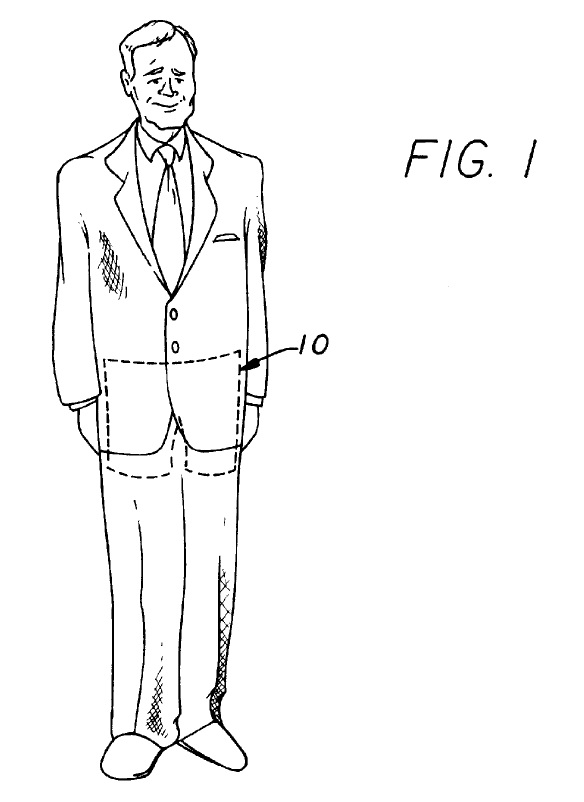
Happy Valentines Day 2020
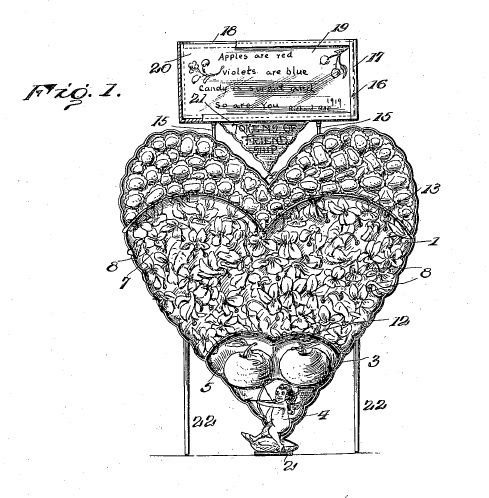
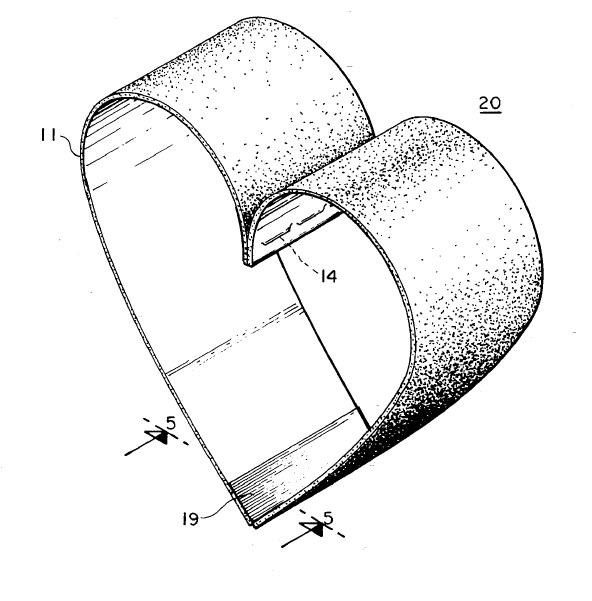
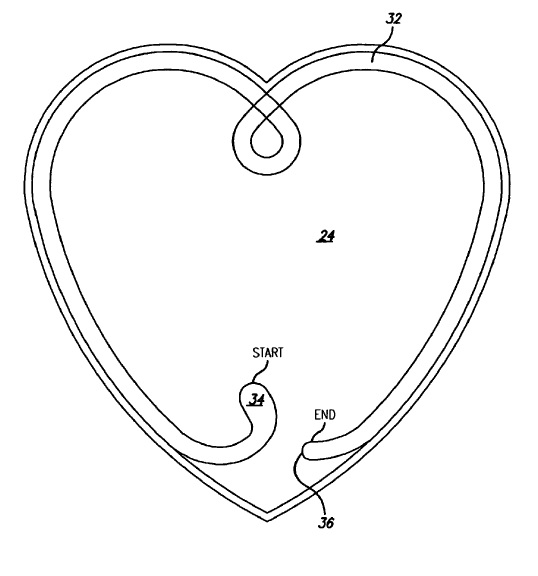
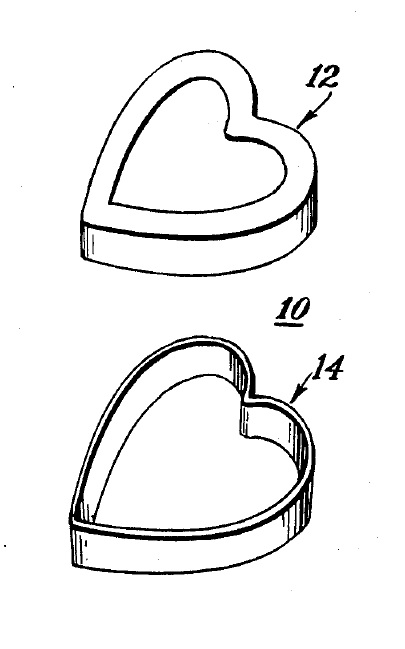


A Binding Settlement Agreement Generally Moots the Action Even if it Requires Future Performance
In Serta Simmons Bedding LLC v. Casper Sleep Inc., [2019-1098, 2019-1159] (February 13, 2020), the Federal Circuit vacated the district court’s summary judgment of non-infringement and remand with instructions to enforce the settlement agreement the parties made prior to the grant of summary judgment.
Casper filed three motions for summary judgment on the issue of non-infringement, and while these motions were pending, the parties executed a settlement agreement, and filed a Joint Notice of Settlement and Motion to Stay, informing the district court that they “entered into a Settlement Agreement” and requesting that all deadlines be stayed. Two days later the district court granted summary judgment for Serta. The district court denied Serta’s motions to enforce the settlement agreement, reasoning that the case was not moot when it issued the summary judgment order because the parties did not intend to immediately dismiss the claims, instead keeping the action alive until the parties fulfilled their obligations under the Settlement Agreement.
On appeal, Casper argued that the Settlement Agreement did not moot the case, because it still had future obligations to perform. The Federal Circuit disagreed, noting that in Exigent Technology, Inc. v. Atrana Solutions, Inc., 442 F.3d 1301 (Fed. Cir. 2006), it held that an enforceable settlement generally renders a case moot even though the parties have not yet performed the terms. The Federal Circuit also noted that other circuits have similarly held that a settlement involving all parties and all claims moots an action even if they contain executory terms. The Federal Circuit held that a binding settlement agreement generally moots the action even if the agreement requires future performance.
The Federal Circuit further found that under Federal Circuit law a district court has jurisdiction to enforce a settlement agreement that resolves patent infringement claims if the motion to enforce is filed before the case is dismissed and the proceedings are ongoing.
The Federal Circuit vacated the district court’s judgment, summary judgment order, and order denying the motion to enforce the Settlement Agreement, and remanded with instructions to enforce the Settlement Agreement. The Court also affirmed he district court’s denial of fees and costs pertaining to proceedings that incurred before the Settlement Agreement, because as a result of the settlement, Casper as not a prevailing party, and in any event the settlement agreement provided that each party bear its own fees..
Petitioner in an IPR is Entitled to Respond to Arguments Made by Patent Owner
In Apple Inc. v. Andrea Electronics Corp., [2018-2382, 2018-2383] (February 7, 2020), the Federal Circuit vacated the Board’s decision in a first IPR on U.S. Patent No. 6,363,345 because the the Board erred in refusing to consider Apple’s reply arguments, but in the second IPR on the patent, it affirmed the determination that claims 5-9 were not invalid.
The Board’s determinations that a party exceeded the scope of a proper reply are reviewed for abuse of discretion. The Federal Circuit said that a reply may only respond to arguments raised in the corresponding opposition, patent owner preliminary response, or patent owner response. Thus, it had to determine whether we must consider: whether the petitioner’s reply brief was responsive to arguments originally raised in its petition; or whether the reply arguments are responsive to arguments raised in the patent owner’s response brief.
The Federal Circuit noted tat Apple’s legal ground did not change in its reply— its reply still asserted that claims 6–9 would have been obvious over the same references. Further, Apple’s arguments were not the types of arguments that we have previously found to raise a “new theory of unpatentability.” The Federal Circuit noted that Apple’s reply does not cite any new evidence or unidentified portions of the references, but merely demonstrated another example of the same algorithm to further explain why the reference discloses the claim elements. The Federal Circuit said that parties are not barred from elaborating on their arguments on issues previously raised.
The Federal Circuit concluded that Apple’s reply squarely responds to the Patent Owner Response.
